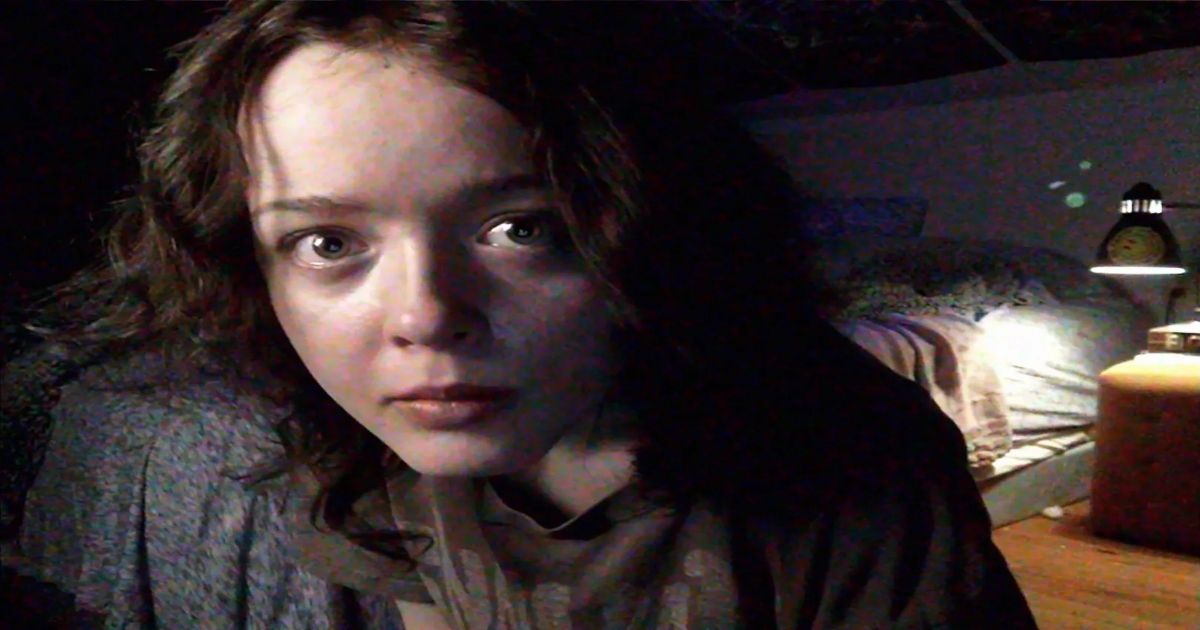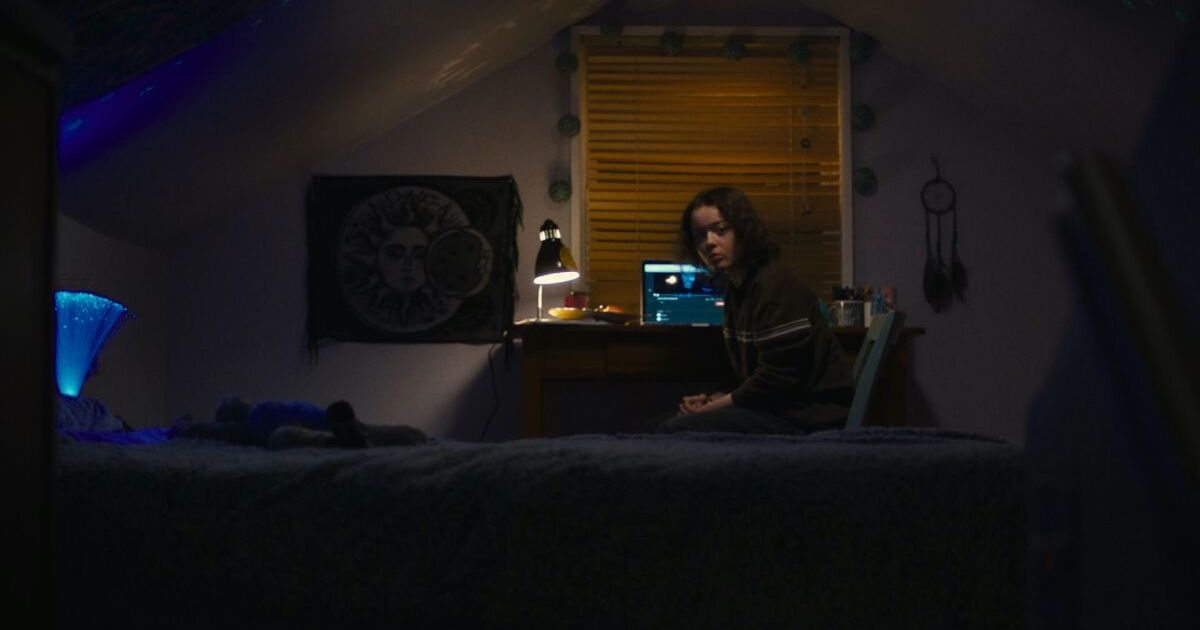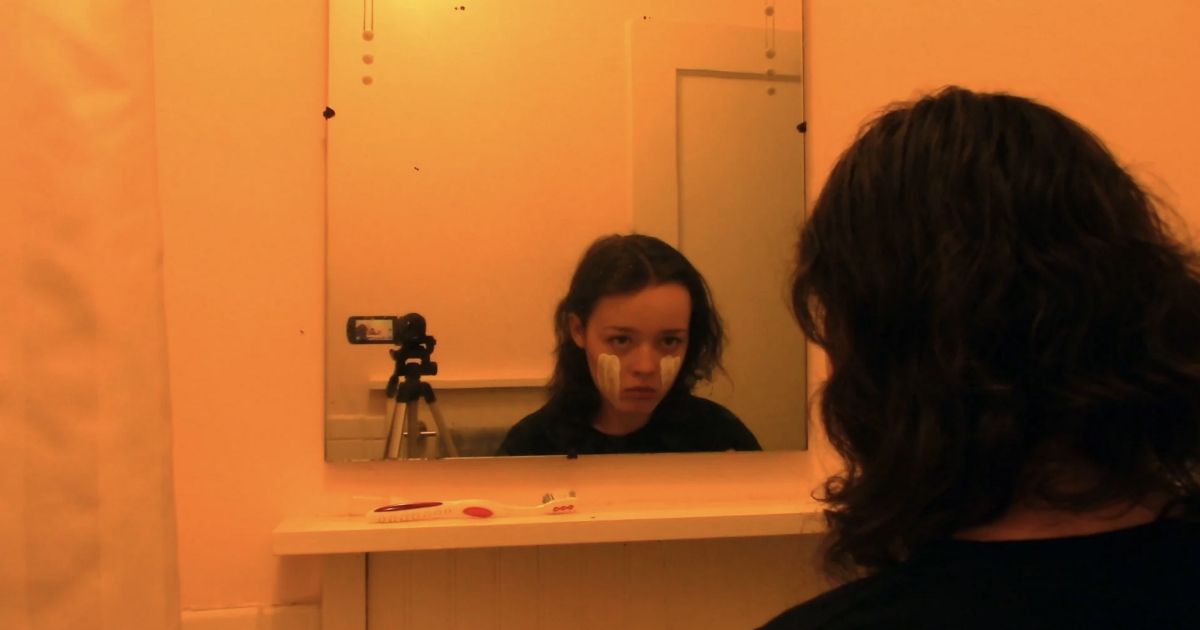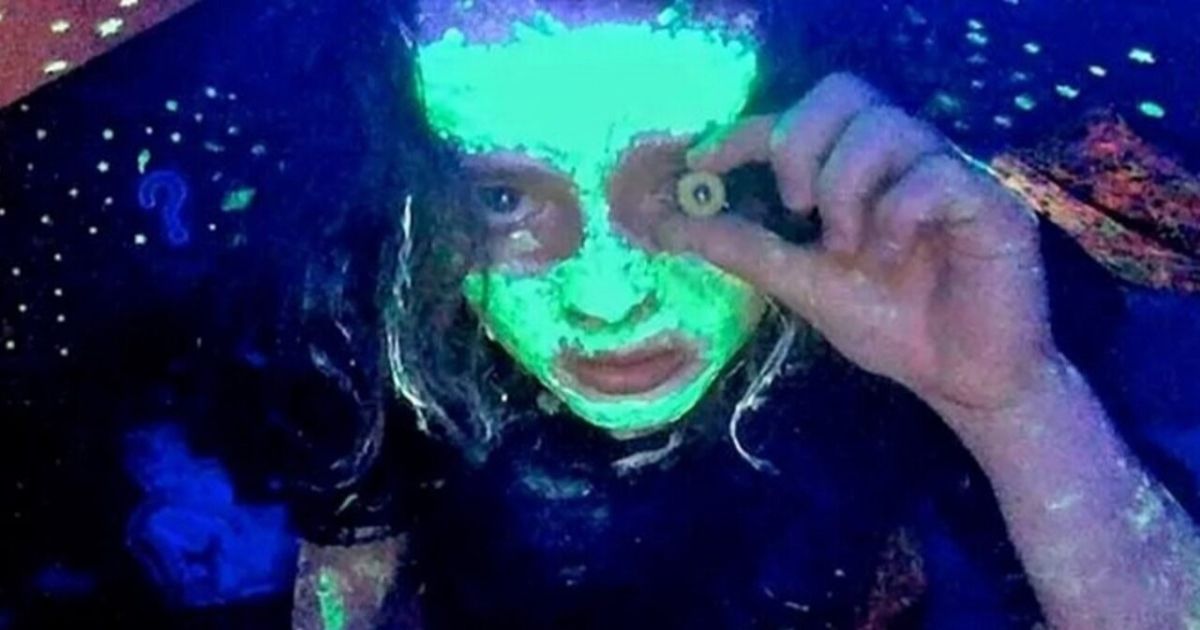Written and directed by Jane Schoenbrun, We’re all going to the World’s Fair reflects on the collective experience of Millennials and Gen-Z growing up with largely unsupervised access to the Internet. The 2021 Sundance nominee has just three actors, with Anna Cobb in her debut role as Casey, an obviously neglected teenager living somewhere in the northeastern United States. In her attic bedroom, Casey participates in an online role-playing horror game, a trend that has been popularized by YouTube creepypastas, among other things. Part of the appeal of Massive Multiplayer Online Role-Playing Games, or MMORPGs, is that they always attract a mix of equally concerned skeptics and believers.
To begin the “World’s Fair Challenge”, players must perform and document an initiation ritual, which involves pricking the finger to draw blood and repeat a chant. Next, players document the supernatural “symptoms” they begin to experience after completing the ritual. Looking at the videos Casey watches, we see that these symptoms gradually become more dramatic until the players finally reach their final destination: the vague and mysterious ‘World’s Fair’.
Casey, who is being watched and cared for by an elderly man who claims to be concerned for her well-being, expresses frustration at how different her symptoms are — that she herself is different. At first, it’s unclear whether anything insidious is going on. This somewhat ambiguous horror coming-of-age film portrays the loneliness of teenagers and the painful despair of exploring your place in the world. Due to its ambiguous nature, fans may be confused about the events that unfold during the film.
Imagination and isolation at the World’s Fair
For younger audience members, the premise of: We’re all going to the World’s Fair is painfully familiar, evoking feelings of both nostalgia and sadness on behalf of our troubled but unwary teenage selves. We’re supposed to both cringe and empathize with Casey as she documents her faked symptoms with poorly edited videos of herself smearing rubbish on her face, screaming unexpectedly, and destroying a beloved stuffed animal (and almost immediately regretting it). As emphasized by Schönbrun’s artistry, an active imagination combined with teenage boredom, insecure identity and parental neglect is generally not a very stable recipe.
Because we are so closely focused on Casey’s perspective, it becomes difficult to discern whether the symptoms are actually occurring; our reality is distorted like hers. It will be noted, however, that there is little evidence to support any paranormal activity. We see Casey almost wanting something to happen to her, desperate to connect with her online peers and audience. This backfires, leaving her feeling more isolated than she already is. When she discovers to her frustration that she is not actually experiencing anything, she compensates for this by acting, hence the nonsense. The destruction of her stuffed animal, which she usually takes everywhere with her, is a moment of difficult realization for her.
The internet and we’re all going to the World’s Fair
We’re all going to the World’s Fair reflects the zeitgeist of our digital age and shows what it is like to be connected to telephones and computers for almost our entire lives. Recently, there has been a renewed trend towards found footage horror, almost exclusively using webcams, cell phones, text messages and other digital media to tell their stories. These are called “screenlife” movies, but unlike most We’re all going to the World’s Fair really feels like it belongs in the digital airwaves, like it has a screen life of its own.
As David Sims writes in The Atlantic Ocean“We’re all going to the World’s Fair feels like a weird bit of internet ephemera that you might accidentally discover while browsing late at night. The film will resonate with anyone who has gone down a macabre digital rabbit hole and discovered something as mild as one too many grim Wikipedia articles, or as robustly disturbing as “creepypasta,” a storytelling subgenre that acts as the folk horror corner. from the web.”
Schoenbrun’s film is an authentic portrayal of that liminal internet space where the horror feels genuine yet ambiguous. It’s like a much surer version of the great horror ARG videos on YouTube, celebrated by Night Mind and other content creators – Everyman Hybrid, Marble Hornets, The West Records, and AlanTutorial.
Transgender Allegories at the World’s Fair
Though not overt, the vague but dark horror atmosphere that Jane Schoenbrun creates is reminiscent of gender dysphoria, something many teenagers struggle with. Gender dysphoria is the experience of discomfort in one’s own body in relation to assigned birth sex versus gender identity. Due to a lack of social acceptance, people experiencing gender dysphoria internalize transphobia and repress their true identity, causing emotional distress. Teenagers in general are already at a psychological point in their lives where they are trying to understand and develop their own identity. For many closeted teens with agender or transgender experiences (many of whom have not yet acquired self-acceptance), these growing pains are excruciating.
When someone doesn’t feel comfortable in their own body, they can rely on self-destructive habits to cope, much like Casey does to deal with her isolation. Consciously or not, Casey may also refer to gender dysphoria when she’s frustrated at feeling “different” from other participants after the ritual has taken place. The detail of the prominent question mark on Casey’s wall, a motif seen throughout the photo, lends itself to this idea.
This sense of dysphoria is especially reflected in the scene where Casey receives the first message from JLB; she finds herself staring at a distorted image of herself, as if staring into a strange mirror. Schoenbrun, who is non-binary?gives tangible insight into what gender dysphoria feels like: confusing, frustrating and isolating.
The meaning of the institution
The wintry rolling hills, bare deciduous trees, the shots of a small downtown scene and a brief flash of a navy-and-yellow license plate suggest that the story is set somewhere in Upstate New York, which is largely made up of countryside and very small towns. . Casey’s setting is already alienating and sets the tone and theme of isolation. However, most of the film is set in Casey’s attic and on the Internet. Alex G’s moody original soundtrack completes the melancholic atmosphere.
Everything about We’re all going to the World’s Fair is intentional. Teenagers, who experience the discomfort of adolescence both socially and physically, tend to withdraw. This is emphasized by the fact that Casey’s world revolves around her investment in the World’s Fair Challenge; she participates in escapism. We barely see her outside her bedroom, and when she’s outside she’s filming for her YouTube channel.
Her isolation is compounded by the fact that she lives in the attic, a room typically reserved for old, discarded items that really don’t belong anywhere else. Obviously, we never see her father, the only other household member whose only line off-screen was to brutally yell at Casey to keep it in. The only characters besides Casey with acting credits are a woman in a YouTube video (Holly Ann Frink) and JLB (Michael J. Rogers), who in Casey’s world only exists through her screen.
A horrific coming of age
The attention to the setting of the story is clever and thoughtful. In developing this setting, Schoenbrun cultivates a nice balance within their film; the internet is Casey’s safe haven, but it’s also an unhealthy coping mechanism for her isolation and discomfort. Physically estranged, Casey seeks and finds connections with people through the World’s Fair Challenge. She feels an inherent connection between them and herself because they are all involved in the challenge together.
That said, her involvement with the Internet poses a threat to her security. She begins to make vague threats to her own life under the guise of symptoms of the World’s Fair Challenge. At this point one can almost safely assume that the challenge is really just an MMORPG, but there is some truth in Casey’s cry for help, which is answered by the opportunistic JLB. This poses another danger; he is an elderly man who, although his intentions are never completely transparent, uses ordinary grooming tactics to gain Casey’s trust.
Described as a horror film, this coming-of-age story beautifully and deliberately portrays growing pains through the plight of the modern teenager, exploring isolation and connectedness, as well as confusion and frustration around identity and connectedness. ASMR’s inclusion in congruence with the overarching theme, soundtrack and overall environment come together to create a powerful sensory viewing experience that’s less about horror and more about self-examination and understanding. Sims eloquently continues in his piece on the Atlantic:
We’re All Going to the World’s Fair might as well have crawled out of one of those enpasta-filled forums, where users exchange eerily plausible fictions. […] By framing the inventiveness of her characters with daringly bizarre images, Schoenbrun discovers what makes internet horror such a unique form of cinema. The viewer is not only shocked by the content, but also by their ambiguous relationship with those who share it. That parasocial relationship is evident in so much online interaction, and the public’s hesitant connection to Casey is what captivates We’re All Going to the World’s Fair to the cryptic end.





